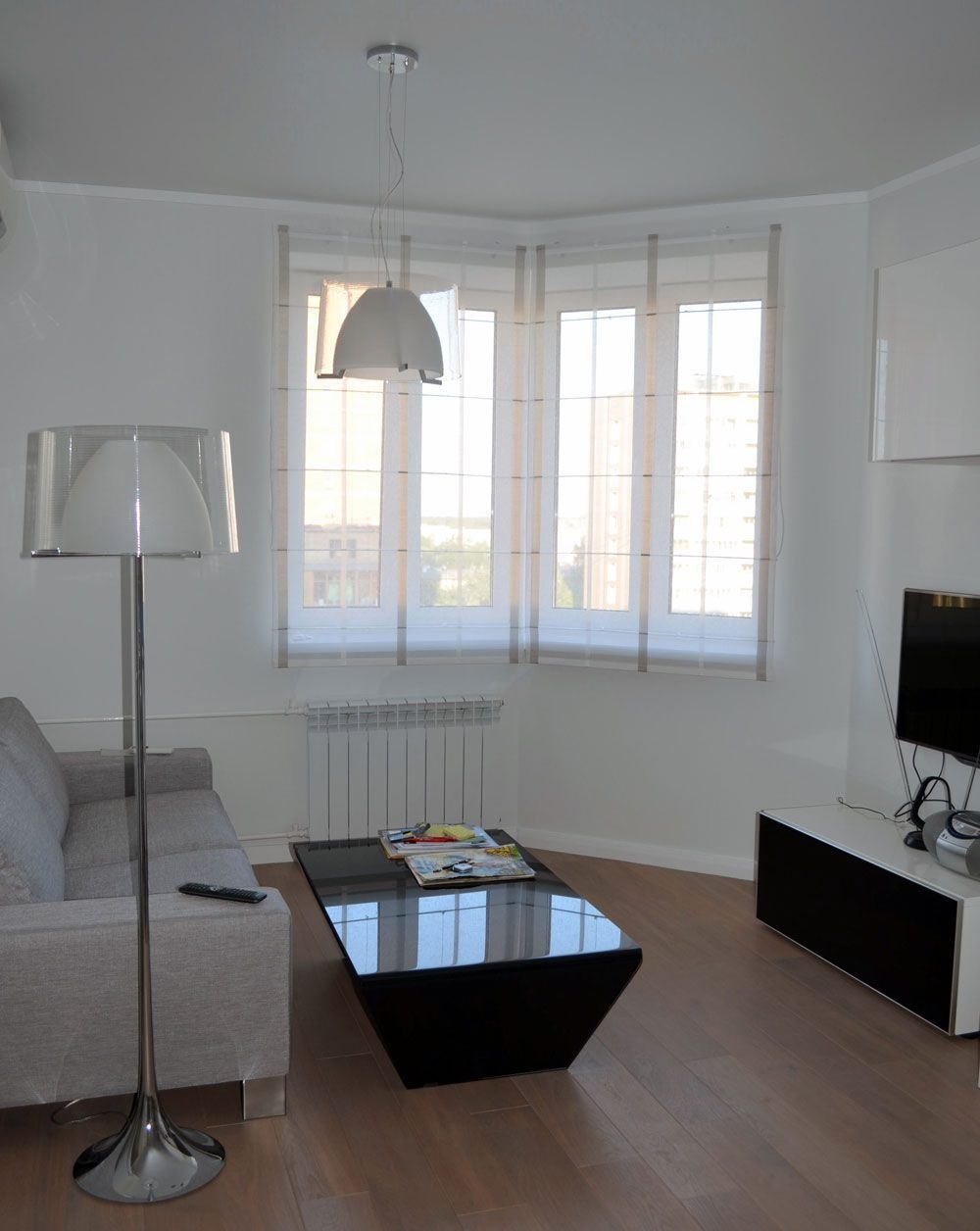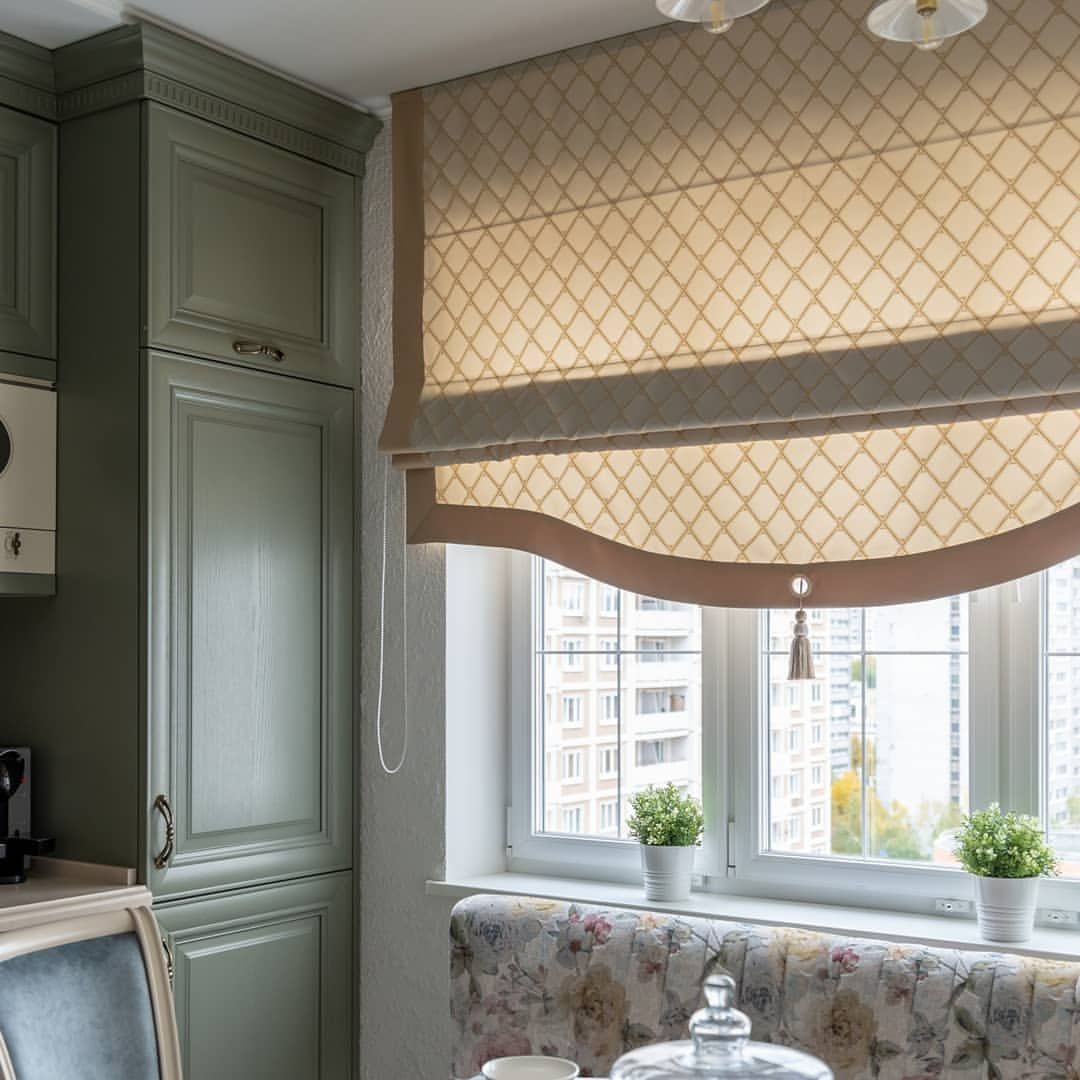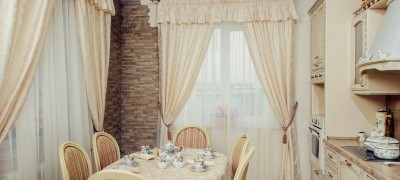How to properly attach Roman shades
Roman blinds have recently taken their place on the shelves in stores, but have already managed to attract attention and even gain a certain share of popularity among customers.

Roman blinds became that new solution in the design of rooms, which was so necessary for people who were tired of the usual models of curtains and ordinary blinds that can be seen in almost every apartment or office in any house.
Description of Roman blinds
What are roman blinds and how do they look? Firstly, it is worth noting that, although the three models are similar to each other, Roman blinds should not be confused with roller blinds or blinds - this is a completely special, free-standing model of curtains that does not look like already bored roller blinds.

Secondly, in addition to their main name, such curtains can also be called Greek curtains, since there are several versions of how they appeared, and all options are somehow connected with Ancient Greece or Rome.

The first version - the sails on ancient Roman warships consisted of dense canvases, which were collected in horizontal folds upward when not in use. One of the sailors decided that such a sail could be used to close the windows of his house. The neighbors saw this, began to do the same, and soon the fashion of closing windows with the semblance of a sail swept the whole of Rome.

The second version - to protect spectators from the scorching sun, who came to watch the gladiatorial fights in the Colosseum, curtains were invented in the form of awnings that folded horizontally. One of the viewers adopted this idea, which was later picked up by his neighbors.
Advantages and disadvantages
Roman blinds have the following advantages:
- Laconic appearance.
- Simple mechanism of work.
- Practicality.

Roman blinds perfectly decorate any room and can be used to decorate every room in the house - from the living room to the bedroom - as this model of curtains will look good absolutely everywhere.

Of the minuses that this model of curtains almost does not have, it is worth highlighting only some difficulty in installation, since you can not immediately figure out how to correctly install Roman blinds.
How to choose the right one
The correct choice of Roman curtains is very important, since it depends on this point whether the curtains will look beautiful and give the room an atmosphere of beauty and comfort, or they will only spoil the impression of the room to the point that you don't even want to go there.
Basically, Roman blinds are divided into three categories according to the types of fabrics used:
- Classic.
- Frameless.
- Cascading.
The most common, of course, are classic curtains. Their feature is the presence of a perfectly flat canvas, which, when the curtains are raised, forms neat horizontal folds.

Frameless Roman blinds are characterized by the absence of special horizontal control rods (they must be present in the classical design).For this reason, horizontal folds can sag, be uneven, or even bend. This gives the room some smoothness, but leaves it out of the clear lines. Frameless Roman shades are usually chosen for living rooms, which are used mainly for relaxation, or for bedrooms to create an atmosphere of lightness and comfort.

Cascading Roman Shades - As the name suggests, they form a "cascade" of folds because they are visible even when the shade is down. In this case, it will not work to achieve an even canvas, as in the classical model, the folds will always be on the curtains.
Mechanism characteristic
The main part of the mechanism of the construction of Roman blinds is the cornice. Special laces are attached to it, which must be connected to the curtain cloth in advance.

For classic Roman blinds, a lower cornice is also added, which has more weight than the upper one: this is done so that the curtains do not lose their shape, do not sag or sway too much from the wind. Special chains also go from the cornice, which should control the laces attached to the canvas - to open the window by raising the curtain, you need to pull the chain and fasten it so that the curtain does not fall.

The design of Roman blinds includes the following elements:
- A canvas made from a fairly dense fabric.
- Rods.
- Pockets (drawstrings).
- Weights.

A canvas made of dense fabric usually has the shape of a rectangle (less often a square) and is made mainly of synthetics. With the help of pockets, you need to fasten horizontally located rods (hard or soft), then the fabric will not lose shape either in the open or in the closed position. Weights are plastic or metal and stretch the fabric.
Attachment types
In order to understand how to fix Roman blinds, you first need to decide for yourself whether there is a need to leave the window sill in the public domain, or is it better to close the entire window with all its defects and irregularities?
If you need to hang a large canvas of curtains that would cover everything from the gaze of a person inside the room, then it is better to hang the curtains on the wall (a few centimeters above the window opening), but the best option would be to fix the curtains to the ceiling.

The fastening of Roman blinds can be mounted in several different ways to different bases: the curtains can be fixed on the window (plastic or wooden), on the wall (7-10 centimeters above the edge of the window opening) or on the ceiling (near the intersection of the ceiling and wall planes).
Features fastening Roman blinds
You can attach Roman shades to three bases, depending on what purpose is being pursued. To hide from your own and other people's eyes all the defects of the window opening and the windows themselves (crooked slopes, scratches on the glass, window sill, etc.), the best option would be to mount the curtains to the wall above the window opening or to the ceiling.

To keep the window sill always in the public domain, it is better to choose a window mount.
To the window
"How to install Roman blinds on plastic windows" is a fairly common question among people who, without looking, grabbed the first model of curtains that came across in the store, and at home, having unfolded and examined it, they realized that they did not understand at all how to deal with it and that where to hang.

To attach Roman blinds to the windows, you need to take a reduced model of the cornice so that it fits in length to the window opening.It looks like a profile made of aluminum, plastic or steel and has a mechanism for adjusting the height of the curtains and a special control unit.

You can fix the cornice to the window in two ways:
- With drilled holes.
- No holes for holders (suitable for a plastic window).
If you do not want to make holes in the window frame, you can fix small Roman blinds using special brackets for movable sashes - they are securely attached to the window and will firmly hold the curtains in the place chosen for them.

Installing Roman blinds on plastic windows usually requires the purchase of additional holders so that the curtains do not collapse on the windowsill at the most inopportune moment.

You should always remember the following rules when attaching a curtain rod for Roman blinds to a window:
- It is necessary to fasten the cornices only with complete self-tapping screws, so as not to weaken the structure.
- Use only curtain rods that are suitable for the curtains and window, so as not to complicate the opening of the window.
- Check the work with a building level.
- Use a curtain rod for attaching curtains, and not staplers, wooden or plastic bars or other fasteners.

To Wall
To attach Roman blinds to the wall, you need to take a cornice with a length of 1.1 to 2.5 meters (depending on the length of the wall on which the curtains will be attached).

To secure the structure, you need to follow the following guidelines:
- Mark the points on which the cornice brackets will hold (the ends of the cornice should be at the same distance from the edges of the window opening).
- Take a hammer drill or hammer drill and drill holes.
- Insert the dowels into the resulting holes, attach the profile and insert the screws.
- Install the cornice in the brackets.
In order to mount the cornice in the wall, you need the following tools:
- Pencil.
- Roulette.
- Drill / hammer drill.
- Screwdriver.
- Level.
To the ceiling
The fastening of the cornice and the Roman curtains themselves to the ceiling is carried out in about the same way as the fastening of the cornices to the wall - you must first make the markings, then drill not very deep holes, install the cornice and tighten all the screws, except for the first two (they are tightened to the end in the very last turn, when the structure has already been assembled completely.

Hanging Roman shades is not at all difficult, if you follow the suggested instructions, this is one of the ways to quickly and efficiently decorate any room, giving its interior freshness, lightness and comfort.
Video: installing a Roman shade on a window













